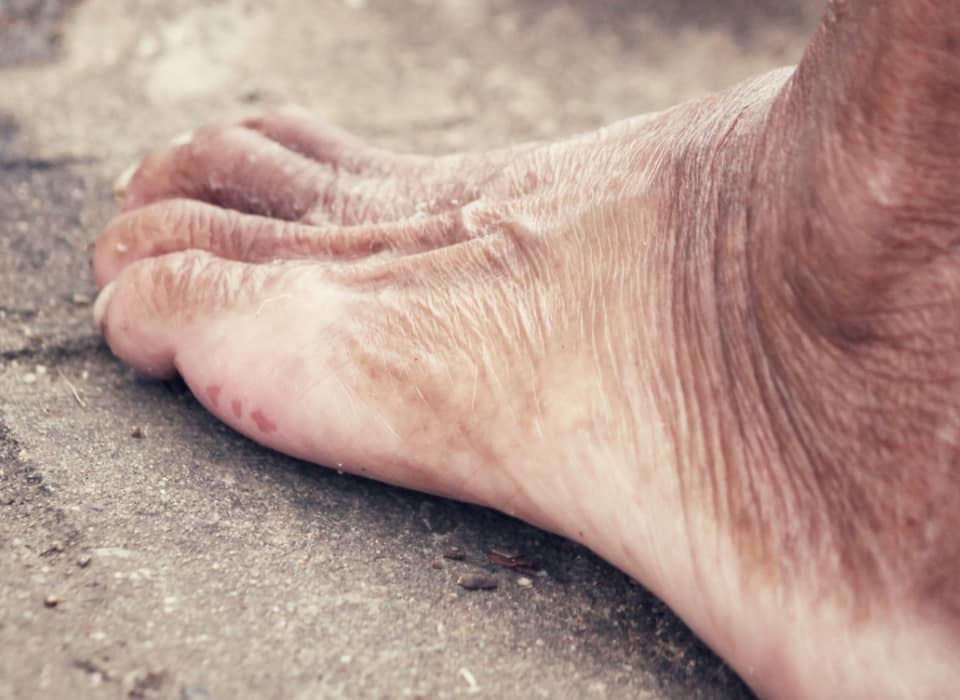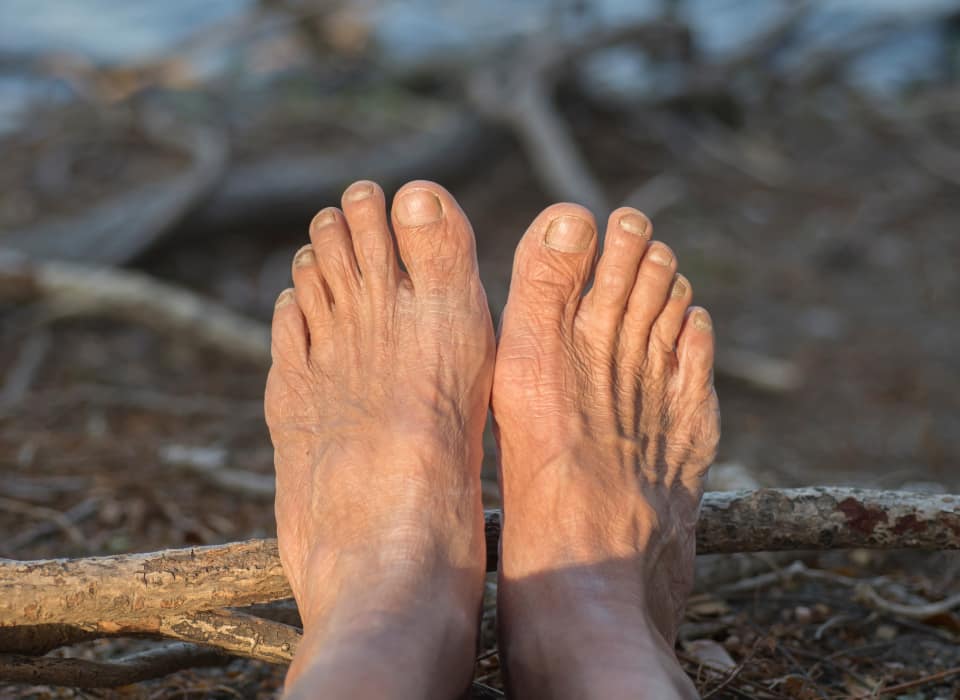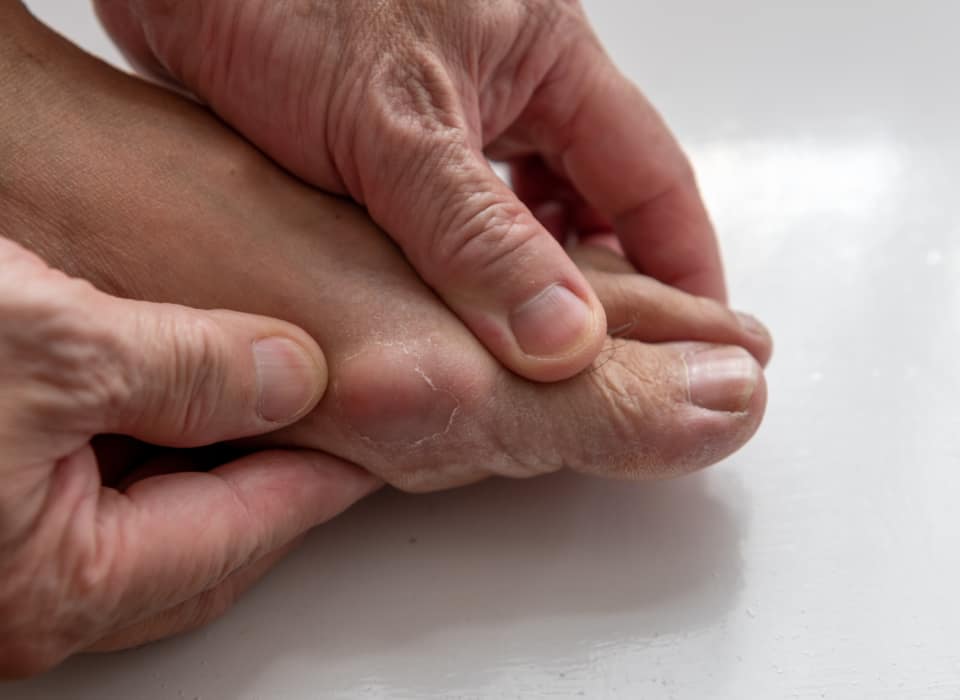Hallux rigidus symptoms
What is hallux rigidus?
Your big toe, also known as the hallux, plays a significant role in maintaining your balance. Just like any other joint, it can be affected by arthritis, making it challenging to walk, run and engage in sports or other activities.
Just like the hinge of a door needs to move smoothly, your big toe joint needs to function properly, allowing you to push off the ground while walking or running. When arthritis sets in, that becomes hard, as the joint may be inflamed and painful.
This type of arthritis is called hallux rigidus. Most of the time, it occurs due to gradual wear and tear of the joint cartilage. This can result in bone-on-bone friction, leading to pain, inflammation, and stiffness in your big toe joint.

So osteoarthritis is the primary reason to develop hallux rigidus. It’s a degenerative condition that commonly arises as we age. But there are other causes, including injury, long-standing bunions, gout, rheumatoid arthritis or infection.
Hallux rigidus symptoms
The symptoms of hallux rigidus can impact your daily life in various ways:
- Pain and stiffness in the big toe joint, particularly during activities like walking and running.
- Limited range of motion in the big toe.
- Swelling and tenderness around the joint.
- Difficulty wearing certain footwear, especially those with a tight toe box.
How is hallux rigidus diagnosed?
If you’re experiencing these symptoms, we welcome you to make an appointment at The Foot & Ankle Centre here in Perth.
Before we can diagnose your condition, we may perform a variety of tests.
Clinical examination: We will examine your feet, paying attention to the range of motion in your big toe joint, any visible deformities and any signs of pain and discomfort.
Functional assessment: We will also assess your gait; how do you walk? Are there any abnormalities in your posture? How is your pain affecting your daily activities?
Imaging tests: We will look at X-rays to visualise the condition of the joint, any narrowing of the joint space, the presence of bone spurs and the extent of joint degeneration.
Hallux rigidus treatment Perth
How is hallux rigidus treated?
To start, we look at non-surgical options to treat hallux rigidus, however, the effectiveness of these can vary from person to person and they may not completely eliminate the symptoms in more advanced cases of hallux rigidus.
Lifestyle changes: Avoiding activities that exacerbate symptoms can prevent further joint irritation.
Footwear changes: Wearing shoes with a roomier toe box and low heels can alleviate pressure on the big toe joint. Sometimes stiffening the sole of the shoe and adding a rocker sole can help
Orthotics: Custom-made shoe inserts can provide better support and help redistribute pressure away from the affected joint.
Physiotherapy: Specific exercises and therapies can enhance foot mobility, strengthen surrounding muscles, and alleviate pain.
Medications: Over-the-counter pain relievers or anti-inflammatory drugs can help manage pain and reduce inflammation.
Cortisone injections can provide temporary relief by reducing inflammation and pain in the joint but are not long-lasting or curative.
Hallux rigidus surgery Perth
Surgical treatment for big toe arthritis
The type of surgery depends on the severity of the arthritis, your overall health and your own preferences. There are 2 main types of surgery for hallux rigidus.
Cheilectomy: In the early stages of hallux rigidus, a cheilectomy may be performed. This minimally invasive procedure involves removing bone spurs and other debris to improve joint movement.
Arthrodesis or fusion: In cases of severe joint degeneration, fusion of the big toe joint may be considered. This procedure eliminates joint movement by fusing the bones together, reducing pain. However, it also limits the ability to bend the big toe. Arthrodesis is the gold standard type of surgery for hallux rigidus as it is very effective in providing pain relief and improved stability. Once the joint is fused, it also doesn’t require ongoing maintenance.
Recovery after surgery
Cheilectomy
| Big operation: | no |
| Swelling: | may persist for several weeks |
| Supportive boot: | In most cases, you will need to wear a protective boot for a short period after the surgery. This boot helps to support your foot and reduce pressure on the operated area. |
| Crutches: | May be used initially to avoid putting weight on the foot and to help with mobility. |
Joint fusion recovery
| Big operation: | yes |
| Swelling: | may persist for 6-12 months |
| Supportive boot: | Walking in a supportive boot is usually by six weeks following surgery. |
| Crutches: | Full weight bearing without crutches is achieved by three months from surgery and most patients return to work and activity by six weeks. |
Self-assessment hallux rigidus
You are not alone
We welcome you to make an appointment at The Foot & Ankle Centre. We try to see patients as quickly as possible. Alternatively, The Foot & Ankle Centre has developed a short form that you can use to answer a few questions. You will receive a personal answer from Prof Dr Gerard Hardisty.



